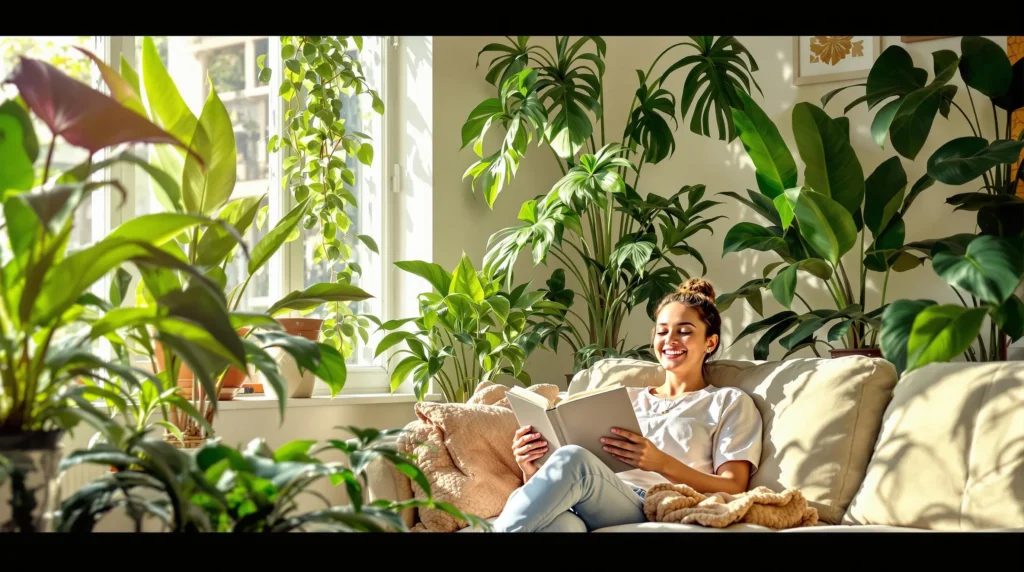Looking to transform your living space into a sanctuary of positive vibes? We’ve discovered that certain houseplants don’t just purify the air—they actually radiate positive energy that can enhance your home’s atmosphere and your overall wellbeing.
In our experience, incorporating these energy-boosting plants creates an immediate shift in how a space feels. From the stress-reducing properties of lavender to the prosperity-attracting powers of jade plants, nature offers us living tools to cultivate the exact energy we want in our homes. We’ll show you which plants deliver the most powerful energy benefits and how to position them for maximum impact.
10 Energizing Houseplants That Create Positive Energy in Your Home
1. Peace Lily (Spathiphyllum)
Peace lilies stand out as powerful energy cleansers in any living space. These elegant plants absorb toxic chemicals from the air, including benzene, formaldehyde, and carbon monoxide. NASA’s Clean Air Study confirms their exceptional air-purifying abilities, making them ideal for creating a healthier home environment. Their striking white blooms against glossy green leaves add a sense of tranquility to any room. Place peace lilies in areas with indirect light, such as living rooms or bedrooms, to maximize their positive energy flow.
2. Snake Plant (Sansevieria)
Snake plants work tirelessly even while you sleep, converting carbon dioxide to oxygen at night. This unique nighttime oxygen production makes them perfect for bedrooms where they can improve air quality and enhance sleep quality. Their upright, sword-like leaves channel positive energy upward, creating a protective energy field. Snake plants thrive in various light conditions and require minimal watering, making them perfect for busy individuals seeking low-maintenance energy boosters.
3. Jade Plant (Crassula ovata)
Jade plants have been cherished for centuries as symbols of prosperity and good fortune. Their round, coin-shaped leaves are said to attract wealth and positive financial energy according to Feng Shui principles. Many business owners place jade plants near entrances or in east corners of homes to activate abundance energy. These succulent beauties prefer bright, indirect light and develop a distinctive tree-like appearance over time, becoming more valuable energy anchors as they age.
4. Lavender (Lavandula)
Lavender brings immediate calm and serenity to any space with its signature scent. Studies published in the Journal of Alternative and Complementary Medicine show its effectiveness in reducing anxiety and improving sleep quality. The plant’s purple blooms also introduce a soothing color frequency that balances emotional energy. Growing lavender indoors requires bright sunlight and good air circulation, making windowsills in meditation spaces or bathrooms ideal locations.
5. Lucky Bamboo (Dracaena sanderiana)
Lucky bamboo represents the five essential elements of Feng Shui: earth, wood, water, fire, and metal. This symbolic plant arranges energy in harmony when placed in the wealth or health areas of your home. Different stalk arrangements carry exact energy properties—three stalks for happiness, five for health, and eight for prosperity. Lucky bamboo thrives in water or soil and prefers moderate indirect light, easily adaptable to various home environments.
6. Aloe Vera (Aloe barbadensis miller)
Aloe vera serves as both a healing plant and protective energy shield. Its gel-filled leaves offer medicinal properties while its energy field absorbs negative electromagnetic radiation from electronic devices. NASA researchers recommend aloe plants near computers and televisions to neutralize harmful emissions. The plant’s ability to purify air while providing practical healing benefits creates a dual-purpose energy enhancer for modern homes.
7. Boston Fern (Nephrolepis exaltata)
Boston ferns create humidity and restore natural moisture balance to dry indoor environments. Their feathery fronds act as natural air humidifiers while removing toxins like formaldehyde and xylene. Energy healers often recommend these plants for creating a grounding effect in spaces with excessive mental activity or anxiety. Hang them in macramé holders near windows with filtered light to maximize their air-purifying capacity and energy circulation benefits.
8. Money Plant (Epipremnum aureum)
Money plants actively clear negative energies and promote financial prosperity according to Vastu Shastra principles. Their heart-shaped leaves grow upward along support structures, symbolizing growth and abundance flow. Research indicates they effectively remove indoor air pollutants while creating positive chi circulation. Place money plants in the southeast corner of your home—the wealth corner in Feng Shui—to amplify their prosperity-attracting properties.
9. Rosemary (Rosmarinus officinalis)
Rosemary brings mental clarity and memory enhancement while infusing spaces with its invigorating aroma. Studies from Northumbria University demonstrate its cognitive benefits, showing improved memory performance in rooms containing this herb. The plant’s energetic properties stimulate mental activity and creative thinking. Growing rosemary in kitchen windows provides both culinary benefits and energy optimization in food preparation spaces.
10. Chrysanthemum (Chrysanthemum morifolium)
Chrysanthemums boost positive energy through vibrant blooms and superior air-cleaning abilities. Their colorful flowers introduce joy and optimistic energy frequencies into living spaces. NASA research ranks chrysanthemums among the top air-purifying plants, removing ammonia, benzene, formaldehyde, and xylene from indoor air. Position these flowering plants in areas needing emotional upliftment or energy renewal, such as home offices or family gathering spaces.
Why Houseplants Can Transform Your Space’s Energy
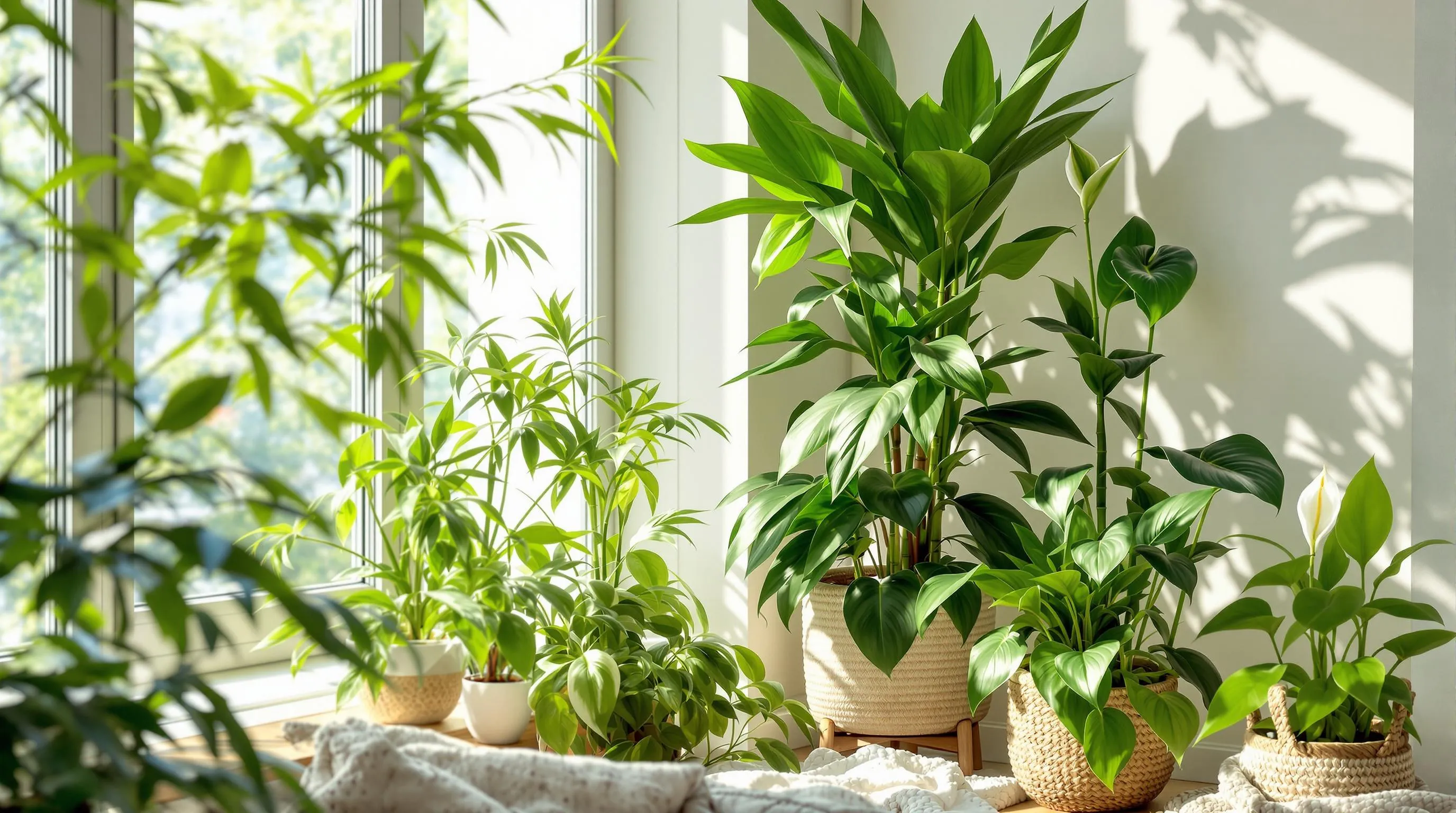
Houseplants do more than just beautify our homes—they actively transform the energy of our living spaces through both psychological and physiological mechanisms. Research has confirmed that incorporating greenery into our indoor environments can dramatically shift how we feel and function in these spaces.
The Science Behind Plants and Positive Vibes
Multiple research studies demonstrate that houseplants trigger measurable relaxation responses in our bodies. EEG measurements have captured shifts in brainwave patterns toward calmer states when people are in plant-filled environments. Plants directly lower stress hormone levels and reduce feelings of fatigue while simultaneously boosting energy and mental alertness. The photosynthesis process creates enhanced oxygen production, supporting better mental clarity and vitality—elements that contribute significantly to what we perceive as “positive energy.” Exposure to indoor plants has been linked to improved cognitive performance and academic achievement, showing their impact extends beyond mood to actual mental functioning. Their presence can even reduce diastolic blood pressure, creating a physiological state more conducive to relaxation and positivity.
Feng Shui Principles for Plant Placement
Feng Shui practices emphasize the importance of balance and using plants strategically to harmonize the flow of Chi (energy) throughout a space. Eastern areas of your home connect to health aspects, making them ideal locations for lucky bamboo or peace lilies that promote vitality. Southern areas relate to fame and recognition, where bright flowers like orchids can encourage positive attention and accomplishments. Southeastern placements correlate with wealth, making jade plants—traditional symbols of prosperity—particularly beneficial in these zones. Common living areas benefit from broad-leafed plants such as rubber trees that excel at air purification while stabilizing energy in shared spaces. We recommend avoiding thorny plants like cacti in areas designated for relaxation, as they’re believed to disrupt the calm energy needed for rest and recovery. The combined air-cleaning capabilities and stress-reduction benefits of strategically placed plants create environments that naturally foster positivity and well-being.
Peace Lily: The Serene Air Purifier
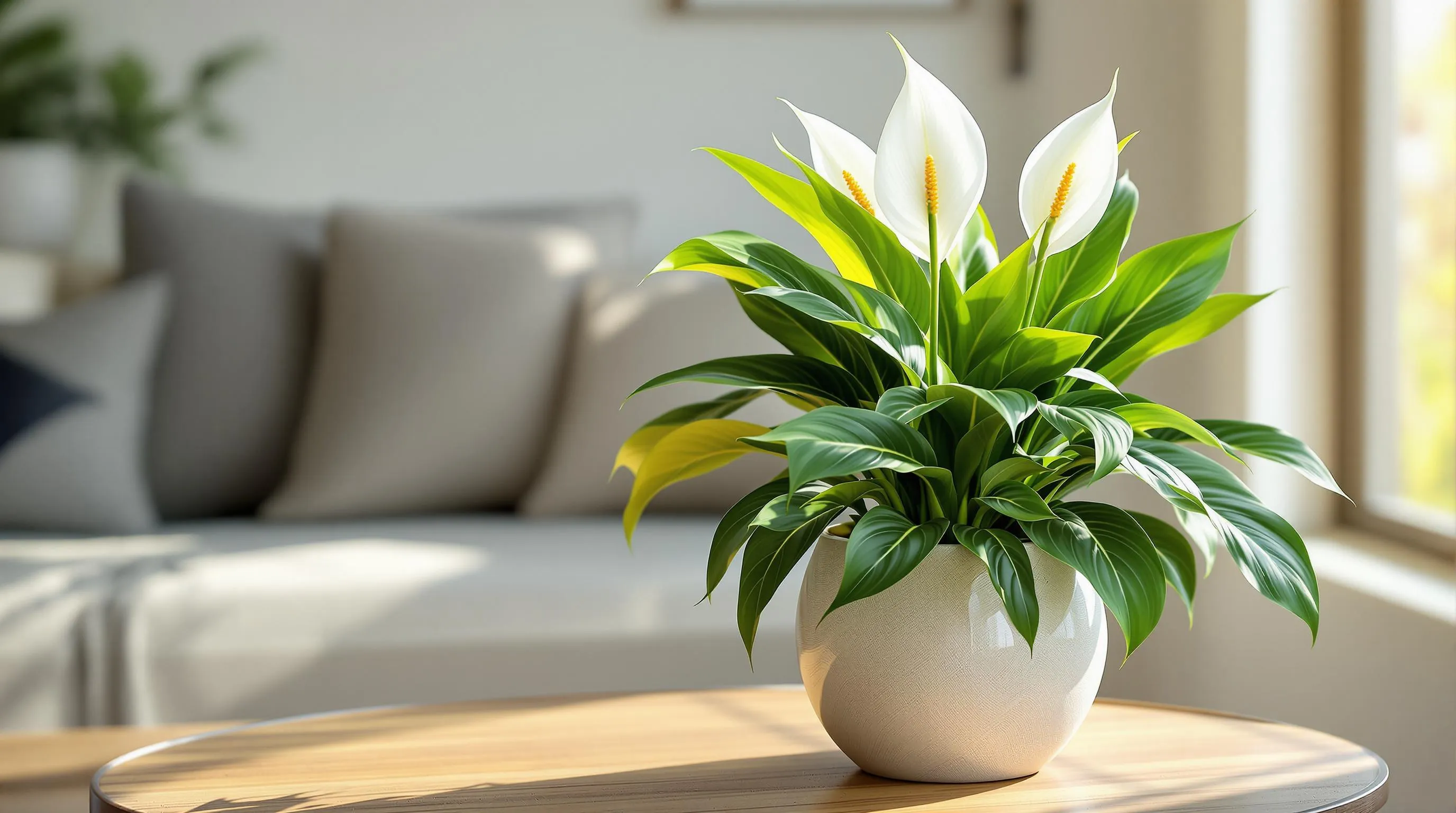
Peace lilies stand out among houseplants for their exceptional ability to create positive energy through powerful air purification properties. These elegant plants with glossy green leaves and distinctive white blooms not only add aesthetic appeal to your space but also actively contribute to a healthier living environment.
How Peace Lilies Cleanse Your Environment
Peace lilies excel at removing harmful toxins from indoor air, specifically targeting formaldehyde, benzene, and trichloroethylene that commonly lurk in our homes. Their natural filtration system works continuously to improve air quality, creating a cleaner breathing environment for everyone in your household. Studies show that this air-purifying action directly contributes to increased feelings of wellbeing and positive energy throughout your living space. The plant’s ability to reduce airborne contaminants helps alleviate respiratory issues, allowing for deeper, more refreshing breaths. Beyond physical benefits, peace lilies help reduce stress levels and improve mood through both their visual appeal and their important contribution to cleaner indoor air.
Care Tips for Thriving Peace Lilies
Proper lighting plays a crucial role in peace lily care, with these adaptable plants preferring moderate to low light conditions that mimic their natural forest floor habitat. Water requirements remain minimal – they’ll thrive when you allow the soil to dry slightly between waterings, making them perfect for busy plant parents. Temperature consistency matters for optimal growth, so maintain your space between 65-80°F (18-27°C) to keep your peace lily comfortable and thriving. These plants communicate their needs clearly – drooping leaves typically signal thirst rather than serious problems, making them exceptionally forgiving for beginners. Position your peace lily away from drafts or heating vents to avoid stress on the plant that could diminish its energy-boosting properties. Occasional dusting of leaves with a damp cloth enhances their ability to photosynthesize efficiently while keeping them looking their best.
Snake Plant: The Bedroom Energy Booster
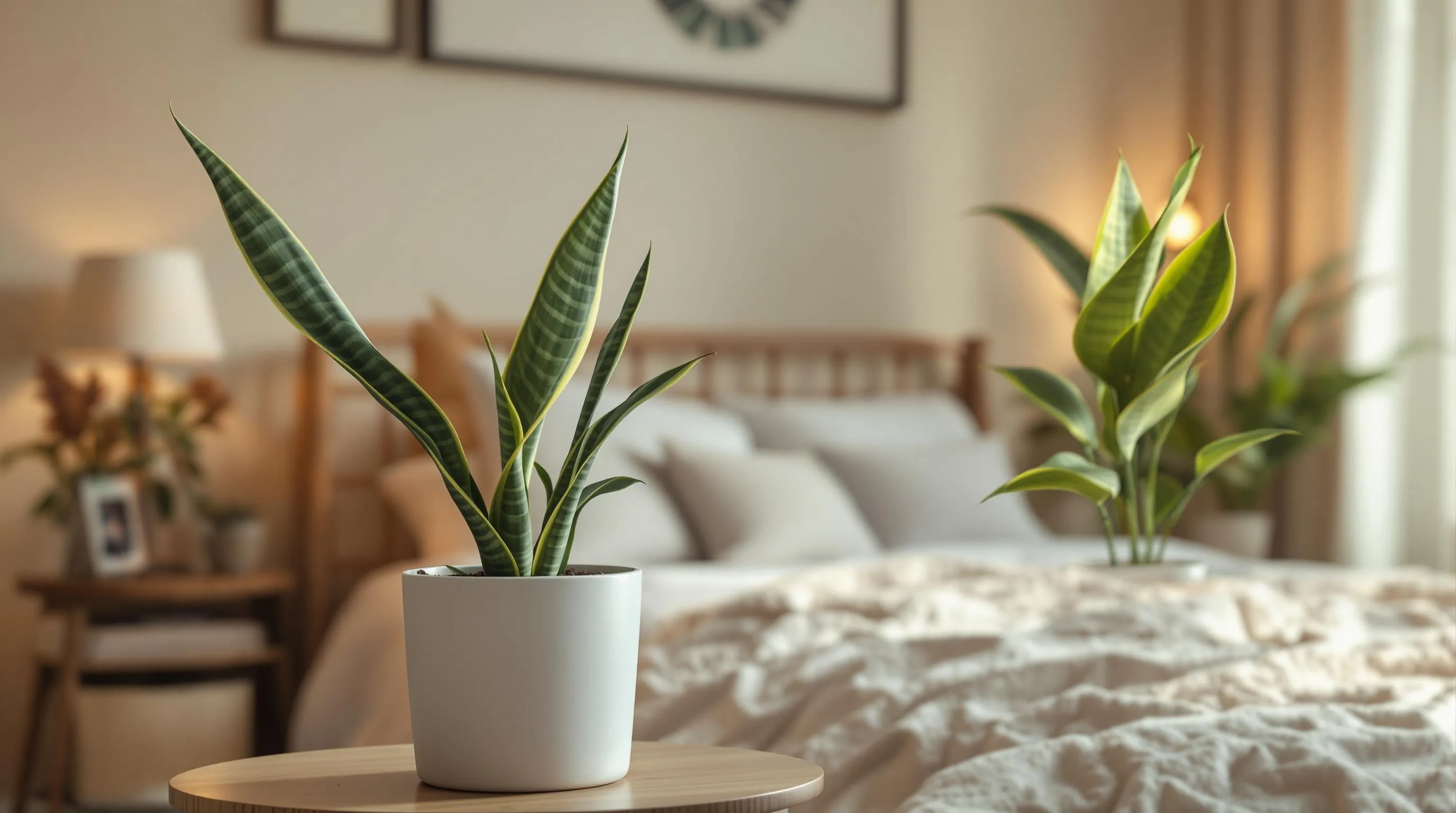
Continuing our exploration of energizing houseplants, the Snake Plant stands out as a particularly powerful addition to your bedroom sanctuary. This striking plant not only brings visual appeal but also offers unique benefits that make it especially valuable during nighttime hours.
Nighttime Oxygen Production Benefits
Snake Plants (Sansevieria Trifasciata) excel at producing oxygen during the night, unlike most plants that release oxygen only during daylight hours. This nighttime oxygen production creates an ideal sleeping environment by improving your bedroom’s air quality while you rest. Research shows that this increased oxygen can promote deeper, more restful sleep patterns by improving your respiratory environment. The plant’s unique metabolic process, known as Crassulacean Acid Metabolism (CAM), allows it to absorb carbon dioxide and release oxygen after dark, effectively functioning as a natural air purifier while you sleep. Many users report waking up feeling more refreshed and energized after placing Snake Plants in their bedrooms.
Low-Maintenance Snake Plant Care
Snake Plants thrive with minimal attention, making them perfect for both novice plant parents and busy households. They flourish in indirect light conditions but can also adapt to both low light areas and bright spots, giving you flexibility in placement throughout your home. Watering requirements are remarkably infrequent – typically only once every 2-3 weeks, or when the soil has completely dried out. These plants can withstand fluctuating temperatures between 60-85°F, adapting well to most indoor environments without special requirements. Their sturdy, upright growth pattern means they need no pruning or training, and they rarely experience pest problems compared to other houseplants. The Snake Plant’s resilient nature allows it to bounce back from occasional neglect, making it an ideal choice for travelers or those with unpredictable schedules.
Money Plant: Attracting Prosperity and Abundance
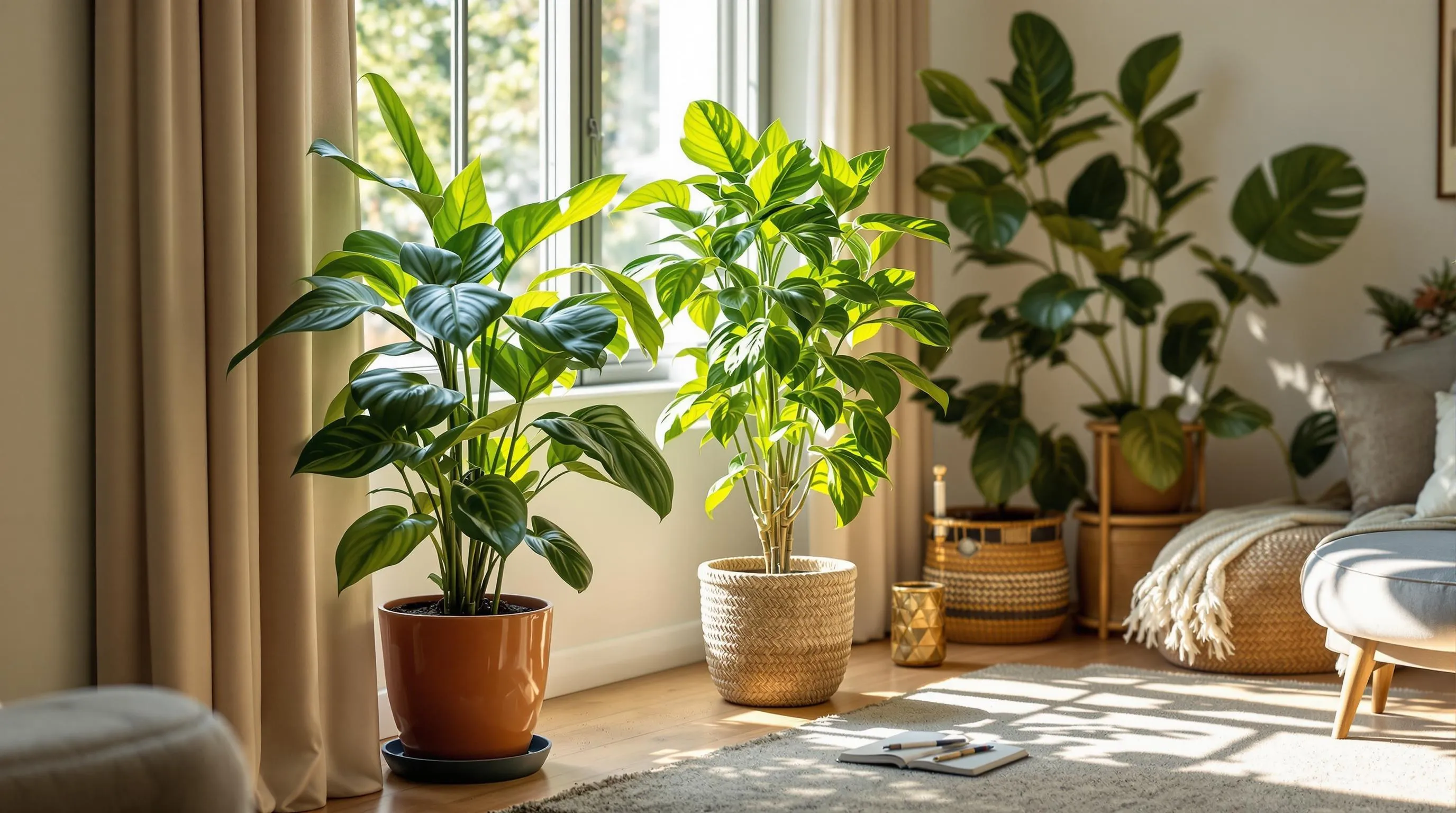
The Money Plant stands as one of the most powerful energy-shifting houseplants, particularly for those seeking financial wellness and abundance. Deeply rooted in both Feng Shui and Vastu practices, this versatile plant is believed to invite wealth and positive financial energy into your living spaces.
Placement Tips for Maximum Financial Energy
Positioning your Money Plant correctly can significantly enhance its prosperity-attracting properties. The southeast corner of your home serves as the optimal location for Money Plants according to Vastu principles, as this area directly connects to wealth and abundance energies. Encouraging the vines to grow in a clockwise direction further promotes positive energy flow throughout your space. For balanced energy distribution, we recommend placing Money Plants in opposite corners of your home, such as southeast and north, creating harmony while maximizing financial benefits. Strategic placement near areas where you handle finances or make important monetary decisions can also amplify the plant’s prosperity-drawing capabilities.
Propagation and Growth Techniques
Money Plants offer remarkable ease of propagation, making them perfect for expanding positive energy throughout your home. Creating new plants through stem cuttings proves incredibly effective—simply snip a healthy section from a mature plant and place it in water or soil, where roots typically develop within a week. Water maintenance requires balance, keeping soil consistently moist without overwatering, which can lead to root rot. Indirect sunlight provides ideal growing conditions for Money Plants, particularly when kept indoors. These adaptable plants thrive in indoor environments while simultaneously purifying the air, creating a dual benefit of financial prosperity and improved air quality. Regular pruning encourages bushier growth and prevents the plant from becoming leggy, ensuring your Money Plant remains both visually appealing and energetically potent.
Lavender: The Stress-Reducing Aromatic
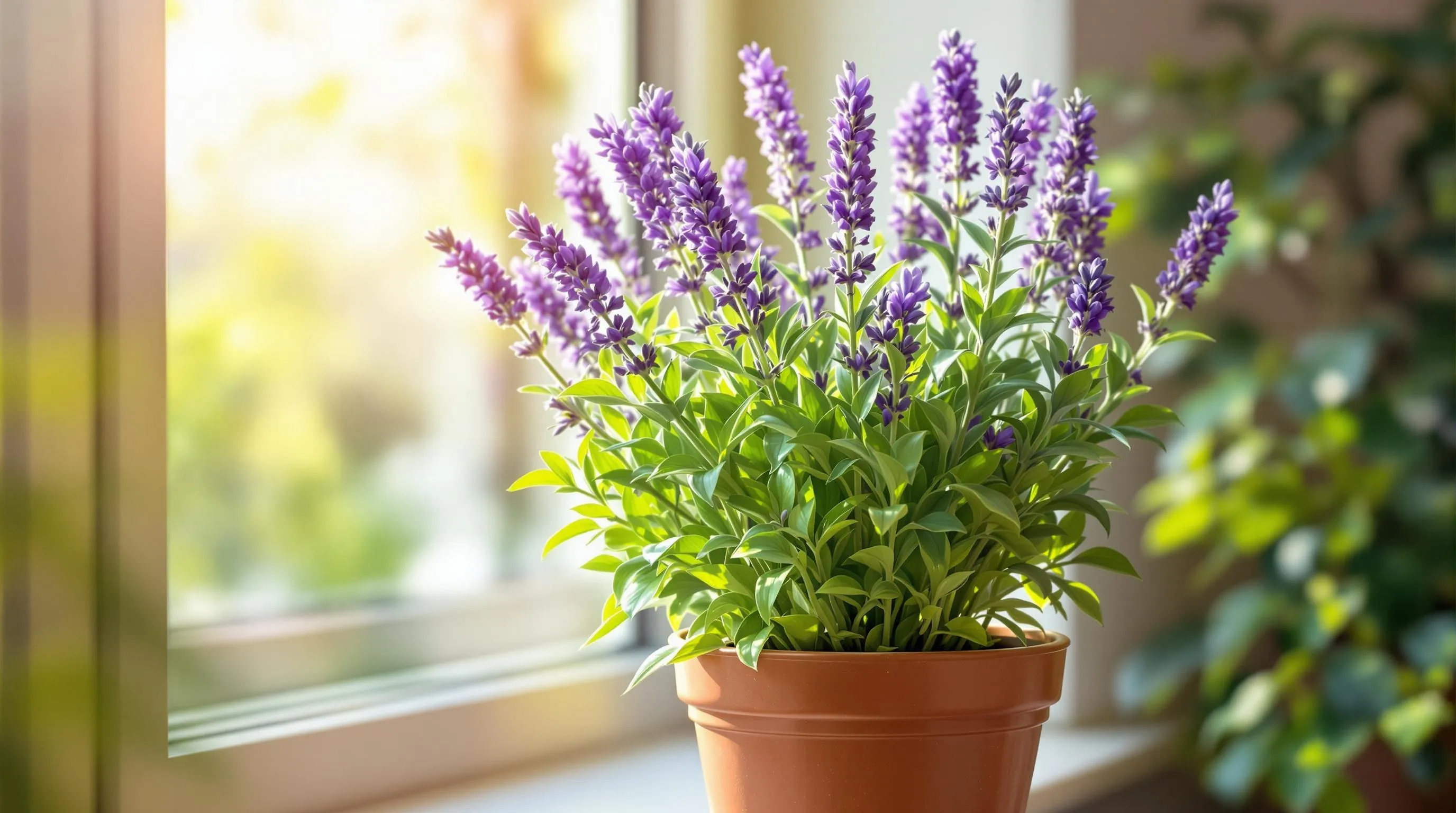
Lavender stands out as one of the most calming houseplants you can bring into your home. This beautiful purple plant does more than just add visual appeal; it actively creates a serene atmosphere through its aromatic properties that promote relaxation and positive energy.
How Lavender Improves Sleep Quality
Lavender’s soothing fragrance works directly on the brain to reduce anxiety and stress levels, making it an excellent natural sleep aid. Research shows that the plant’s scent can lower heart rate and blood pressure, creating ideal conditions for restful sleep. People who keep lavender plants in their bedrooms often report falling asleep faster and experiencing deeper, more restorative rest throughout the night. The gentle aroma naturally calms the nervous system, helping to quiet racing thoughts that might otherwise keep you awake. For maximum sleep benefits, place a small potted lavender plant on your nightstand or windowsill where its scent can gently permeate your sleeping space.
Indoor Lavender Growing Guidelines
Lavender thrives in well-drained soil and requires full sunlight to partial shade to flourish indoors. Position your lavender plant near a south-facing window where it can receive at least 6-8 hours of direct sunlight daily. Temperature consistency matters for lavender, with ideal conditions ranging between 65°F to 75°F (18°C to 24°C) during the day. Water your lavender sparingly, allowing the soil to dry slightly between waterings to prevent root rot, as overwatering is the most common cause of lavender plant failure. Regular pruning encourages healthy growth and promotes blooming, so trim back about one-third of the plant after flowering periods. Lavender also benefits from occasional feeding with a low-nitrogen fertilizer during its growing season. Remember that indoor lavender plants might need repotting every 2-3 years as they expand and outgrow their containers.
Aloe Vera: The Healing Energy Provider
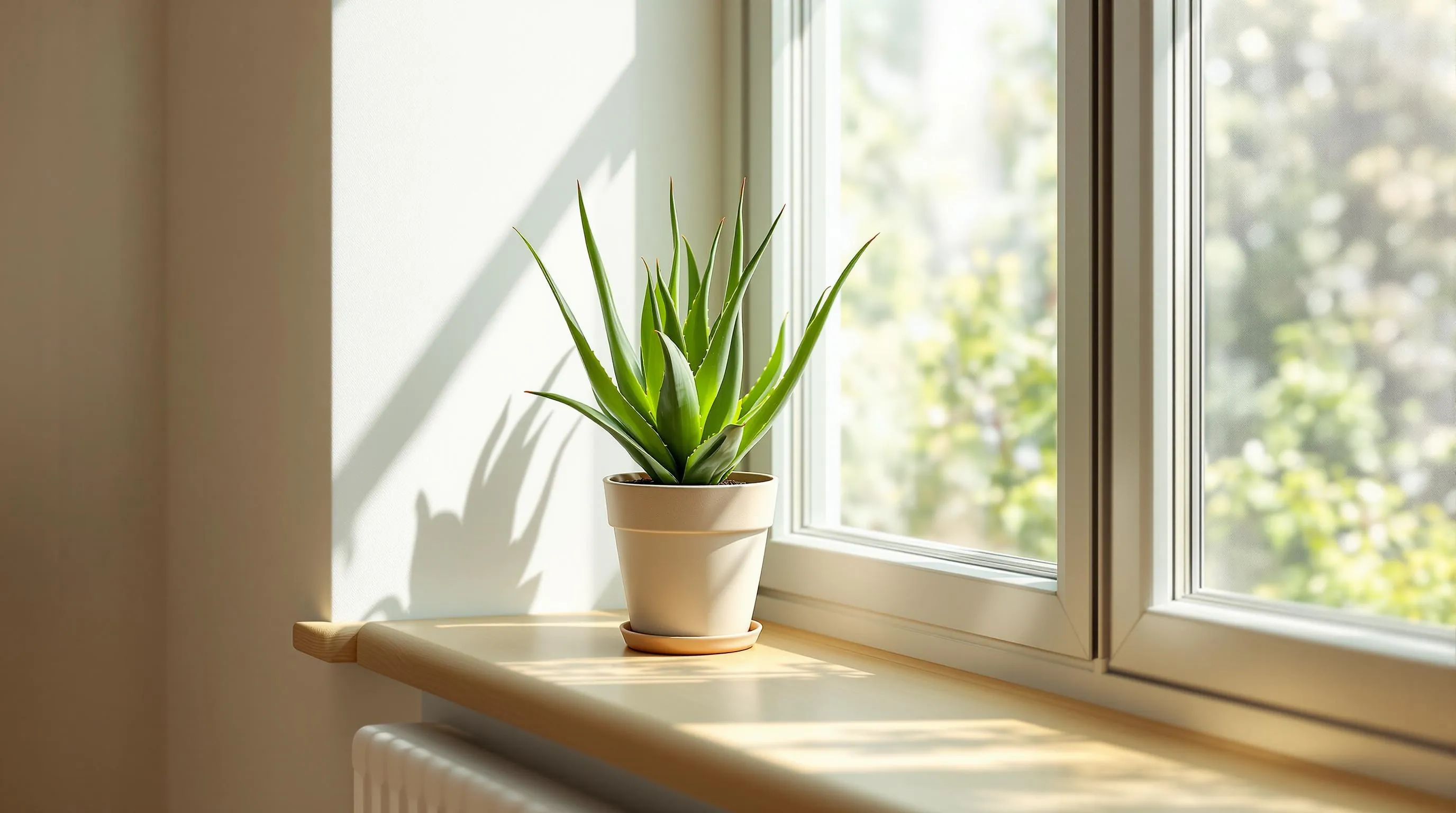
Medicinal Properties and Energy Benefits
Aloe vera stands out as one of the most energetically beneficial houseplants you can add to your home. This versatile plant purifies the air by absorbing harmful toxins like formaldehyde and benzene, indirectly improving your mood and energy levels. Research shows that having indoor plants like aloe vera can significantly reduce stress levels and improve overall mental well-being. The healing properties of aloe extend beyond its traditional use for treating minor burns and skin irritations. Studies have demonstrated that houseplants boost productivity by up to 38%, with their presence creating environments conducive to increased relaxation and creativity. We’ve found that aloe’s air-purifying capabilities are linked to fewer headaches and improved focus, making it an excellent choice for home offices or study areas where concentration is essential.
Sunlight and Watering Requirements
Aloe vera thrives in bright, indirect sunlight, requiring approximately 6-8 hours of daily exposure for optimal growth. East or west-facing windows provide the perfect light conditions for this energy-boosting plant. Watering should be infrequent—typically every 2-3 weeks—as overwatering poses a serious risk of root rot that can quickly kill your aloe plant. Well-draining soil is essential for maintaining healthy roots and preventing moisture-related issues. Plants placed in insufficient light will develop leggy growth, stretching toward light sources and losing their compact, energetic form. We recommend checking soil dryness before watering by inserting your finger about an inch into the soil—only water when it feels completely dry to the touch. This low-maintenance watering schedule makes aloe vera perfect for busy households seeking positive energy without demanding care routines.
Bamboo Palm: The Mood-Lifting Humidifier
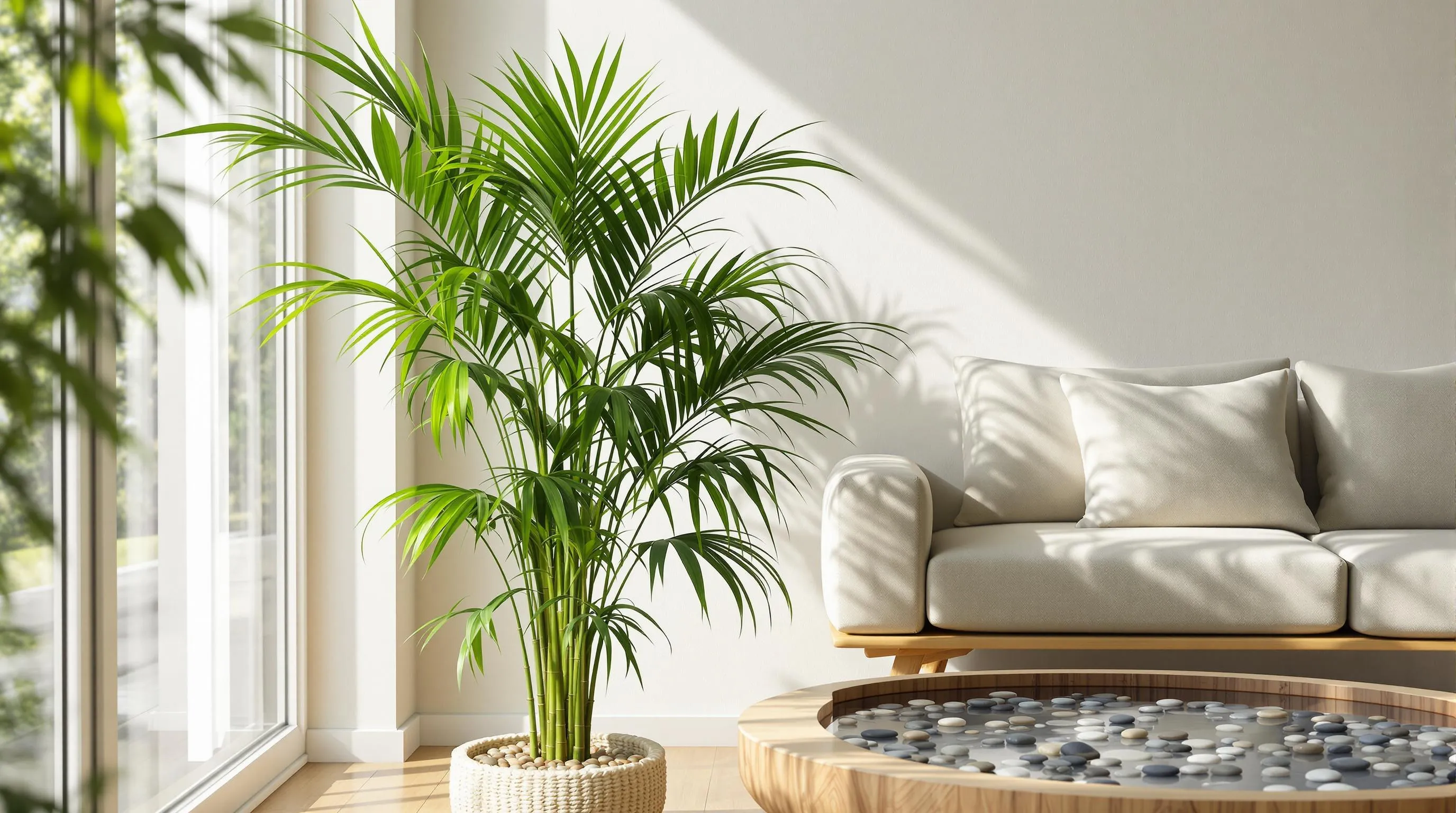
The Bamboo Palm (Chamaedorea seifrizii) stands out as a remarkable mood enhancer that naturally humidifies your living space. Research shows this elegant plant actively filters harmful toxins like formaldehyde and benzene from your air while releasing moisture that counteracts dry conditions created by heating systems.
Creating a Tropical Energy Oasis
Bamboo Palms transform ordinary rooms into vibrant tropical retreats that boost your mental wellbeing. Studies confirm that incorporating these palms into your living or work environment improves cognitive performance, improving concentration and memory retention. Their lush green foliage creates a visually appealing atmosphere that elevates energy levels and reduces stress levels. Positioning these palms strategically allows you to maximize their air purifying qualities while fostering a calming atmosphere that promotes relaxation. We recommend placing them in areas where you spend important time to benefit from their mood lifting properties throughout the day.
Maintaining Healthy Bamboo Palms
Bamboo Palms thrive in bright, indirect light conditions that mimic their natural understory habitat. Well-draining soil prevents root problems while supporting the plant’s ability to filter toxins effectively. Regular misting helps maintain optimal humidity levels around the plant, improving its natural humidifying properties. Placing your palm near a pebble tray filled with water provides consistent moisture without waterlogging the soil. Periodic leaf cleaning ensures efficient photosynthesis and improves the plant’s toxin absorption capabilities. These palms require minimal maintenance while delivering substantial air quality improvements and stress-reducing benefits. Water them consistently but avoid soggy soil conditions that can damage the root system. Their forgiving nature makes them perfect for both experienced plant enthusiasts and beginners looking to add positive energy to their space.
Jasmine: The Joy-Inducing Bloomer
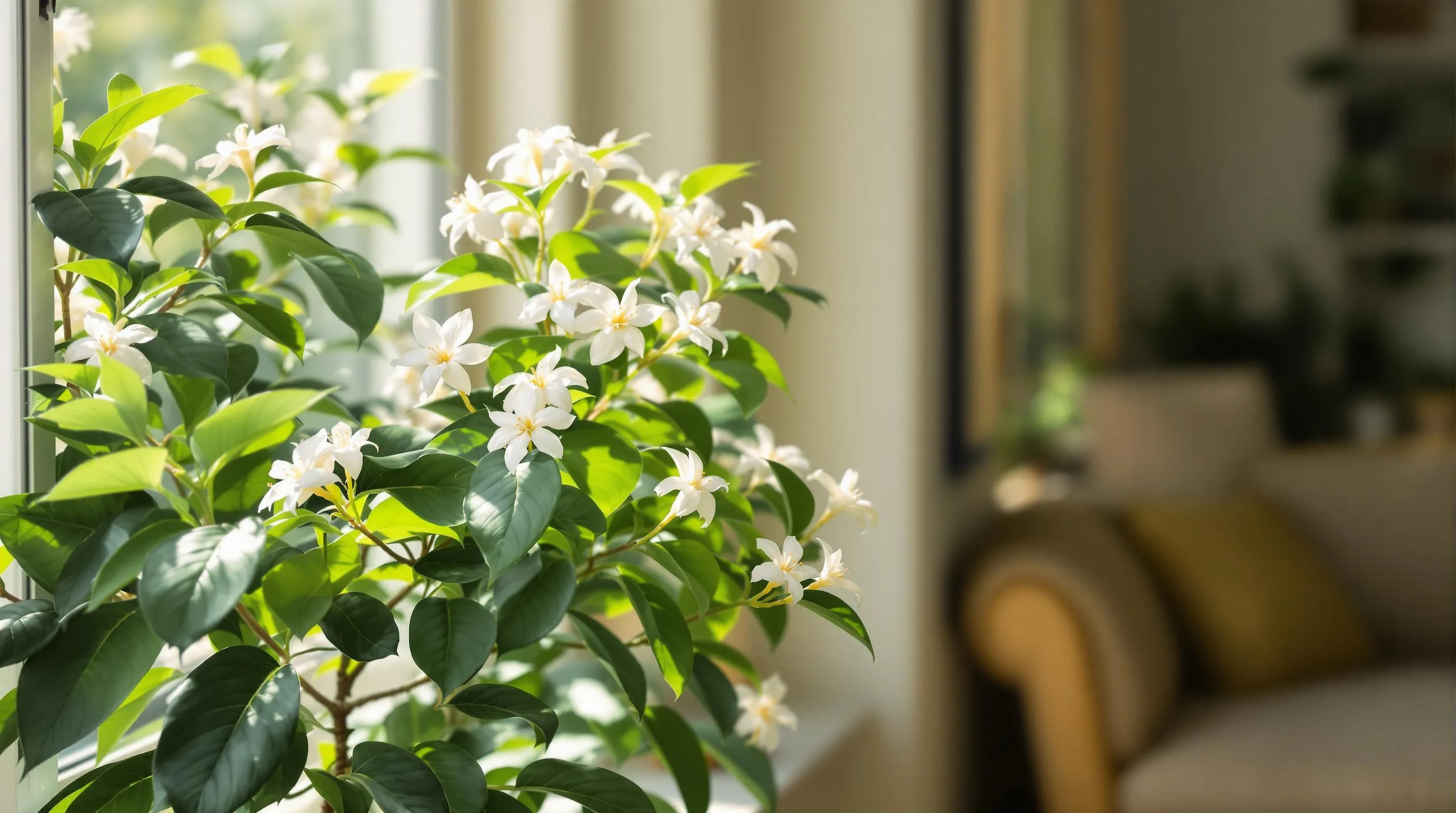
Jasmine stands out among houseplants as a powerful mood elevator, creating an atmosphere of positivity through its enchanting fragrance and delicate blooms. This popular flowering plant isn’t just visually appealing—it actively contributes to creating a more uplifting environment in your home.
Harnessing Jasmine’s Mood-Improving Scent
Jasmine flowers produce a therapeutic scent that works wonders for emotional wellbeing. Research confirms that its aroma significantly reduces anxiety levels while promoting a sense of calm throughout your living space. The plant’s natural aromatherapy properties make it an excellent alternative to synthetic air fresheners, offering genuine psychological benefits that include stress reduction and improved concentration. Many homeowners place jasmine plants in meditation corners or reading nooks to maximize exposure to its soothing fragrance. Beyond its delightful scent, jasmine performs double duty as a natural air purifier by absorbing carbon dioxide and releasing fresh oxygen, creating a healthier breathing environment. This air-purifying capability helps eliminate common household toxins like formaldehyde and benzene, which can trigger headaches and respiratory issues.
Seasonal Care for Indoor Jasmine
Proper jasmine care ensures your plant thrives year-round while continuing to provide its energy-boosting benefits. Light requirements for indoor jasmine include bright, indirect sunlight, preferably near east or west-facing windows where it can receive filtered light. Temperature stability between 65°F to 75°F creates optimal growing conditions, though jasmine can tolerate slight variations in either direction. Watering needs change seasonally—during active growth periods, the soil should remain consistently moist but never waterlogged. Winter months require less frequent watering as the plant’s growth naturally slows. Fertilization should follow a regular schedule during spring and summer using a balanced, water-soluble plant food that supports healthy blooming. Pruning after the flowering period helps maintain the plant’s shape and encourages denser growth in the following season. Humidity levels around your jasmine should remain moderate, which can be achieved through occasional misting or placing the pot on a pebble tray with water.
Lucky Bamboo: The Harmony and Balance Creator
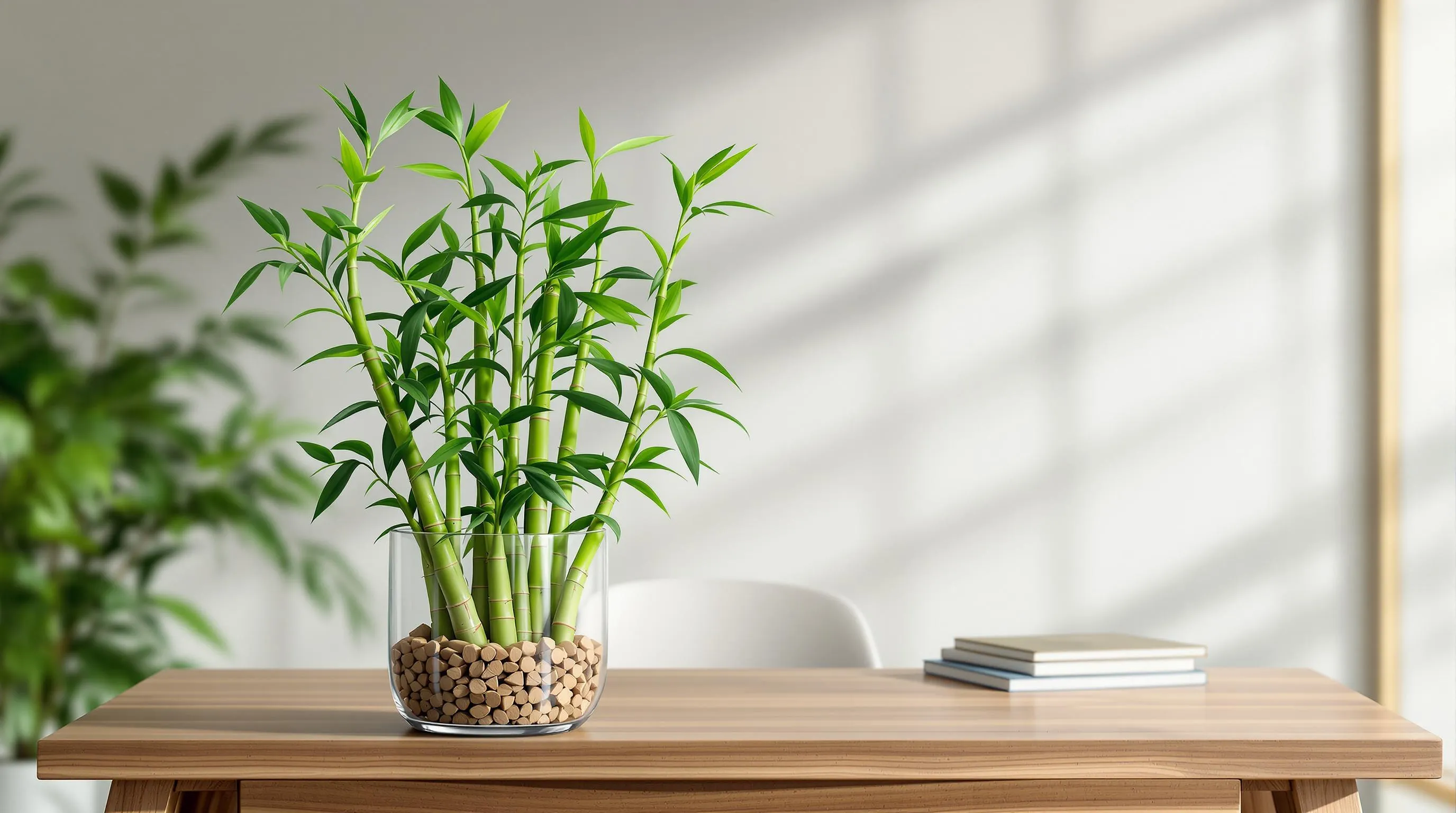
Lucky bamboo stands as a powerful symbol of good fortune and positive energy across many cultures. This versatile plant is believed to bring harmony and balance to any space, making it a popular choice for those seeking to enhance their home’s energy flow.
Arrangement Styles for Different Energy Needs
Lucky bamboo arrangements carry exact meanings based on the number of stalks used, with each configuration attracting different types of energy. Three stalks represent happiness, wealth, and long life—perfect for creating a balanced energy flow in living spaces. Five stalks attract wealth and prosperity, making this arrangement ideal for home offices or business spaces. For those seeking health benefits, seven stalks promote vitality and positive health energy. Nine stalks bring overall good fortune and are excellent for entryways or main living areas. Arrangements featuring two stalks should be avoided as they’re associated with love and are traditionally given only to couples or romantic partners. Studies show that being surrounded by thoughtfully arranged greenery like lucky bamboo improves mental health and productivity, creating environments where positive energy can flourish naturally.
Water-Growing vs. Soil-Growing Methods
Lucky bamboo offers flexibility in growing methods, each with distinct benefits for energy cultivation. Water-growing provides a visually striking presentation that enhances the plant’s aesthetic appeal, with the transparency of glass containers creating a sense of lightness and flow in your space. This method requires minimal maintenance—simply change the water every two weeks to prevent algae growth and add liquid fertilizer occasionally. Soil-growing offers better stability and typically results in stronger, healthier plants that more effectively purify surrounding air. Plants grown in soil generally develop more robust root systems and may live longer, creating a sustained source of positive energy in your home. Your choice between these methods can align with exact energy goals—water represents flow and movement while soil represents stability and grounding. Many enthusiasts begin with water cultivation for its simplicity before transitioning to soil for long-term growth and enhanced energy benefits.
Holy Basil (Tulsi): The Spiritual Protector
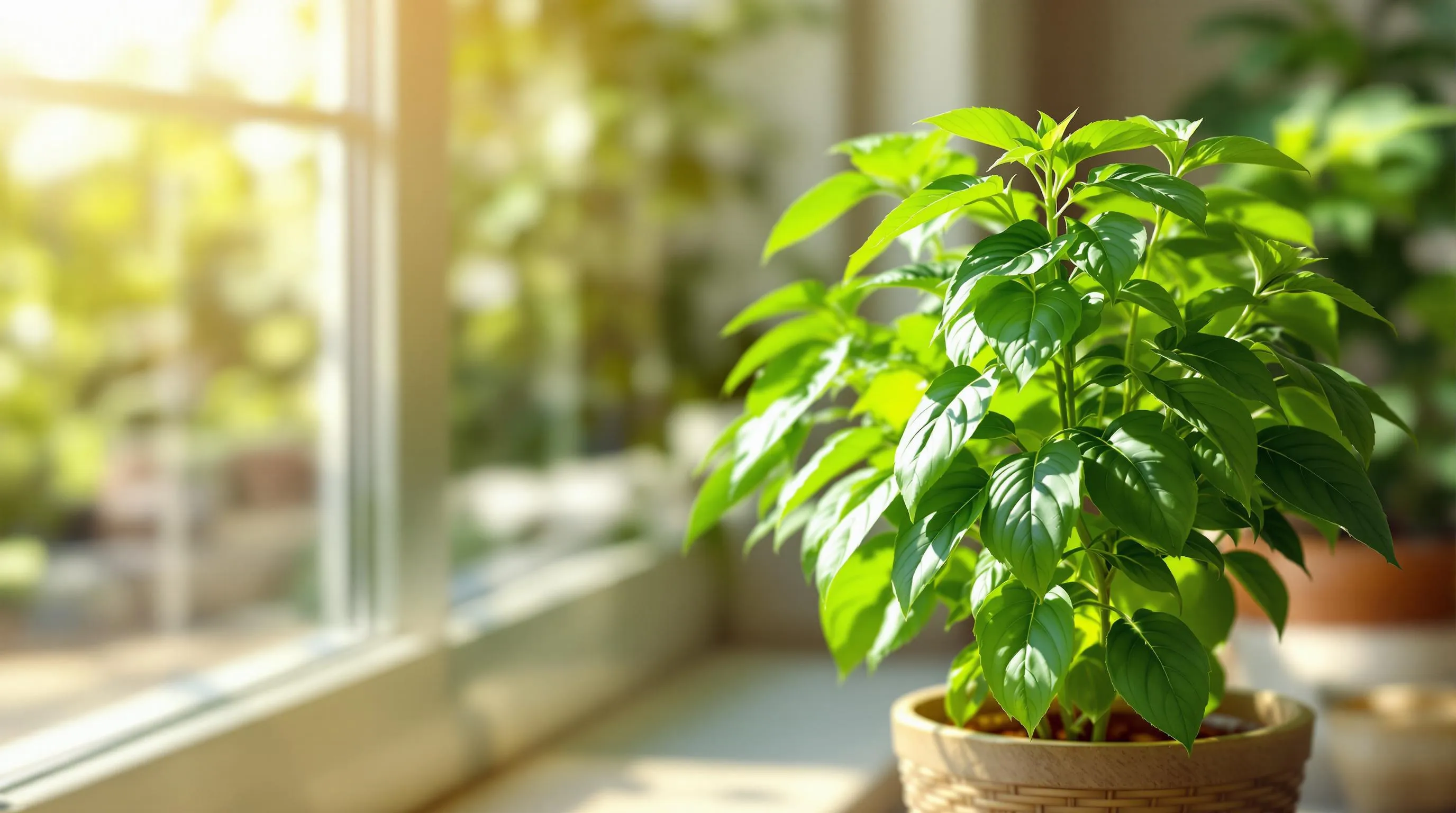
Holy Basil, also known as Tulsi, holds a revered position among houseplants that create positive energy, combining spiritual significance with tangible health benefits.
Ancient Traditions and Modern Benefits
Holy Basil occupies a special place in ancient traditions where it’s considered sacred and associated with good health and prosperity. Many households maintain Tulsi plants not only for their physical benefits but also for their spiritual protection properties. Research confirms that like other beneficial houseplants, Holy Basil contributes to improved air quality in indoor environments. The plant’s calming and soothing properties align with modern wellness practices that focus on stress reduction and mood enhancement. Studies suggest that Tulsi shares similar benefits with plants like Peace Lily and Snake Plant, which are known to reduce stress levels and create a more positive living environment. Its presence in a home can create an atmosphere of tranquility while simultaneously offering the air-purifying advantages common to many houseplants.
Growing Holy Basil in Indoor Settings
Holy Basil thrives in indoor environments when provided with adequate sunlight and proper watering routines. Place your Tulsi plant near a sunny window where it can receive at least 6 hours of direct sunlight daily for optimal growth. Water requirements for indoor Holy Basil include keeping the soil consistently moist but never soggy, as overwatering can lead to root rot. The plant adapts well to container growing, making it suitable for apartments and homes with limited garden space. Regular pruning encourages bushier growth and prevents the plant from becoming leggy, improving both its appearance and vigor. Temperature considerations are important as Holy Basil prefers warmth, so keep it away from cold drafts and maintain room temperatures between 65-80°F (18-27°C). Fertilizing lightly once a month during growing season helps maintain the plant’s vitality and energy-improving properties.
How to Combine Multiple Energy-Boosting Plants for Maximum Effect
Bringing these energy-boosting plants into your home is just the beginning of your journey toward creating a sanctuary of positive vibes. We’ve seen how each plant offers unique benefits from stress reduction to air purification and prosperity attraction.
The true magic happens when you strategically combine these living energy sources throughout your home. Try pairing Lucky Bamboo with a Money Plant in your workspace to enhance focus and abundance. Place a Snake Plant with Lavender in your bedroom for optimal sleep quality.
Remember that maintaining these green companions isn’t just about their survival but nurturing the positive energy they provide. With proper care and thoughtful placement these plants will transform your living space into an oasis of calm prosperity and wellness.
Your journey to a more energetically balanced home starts with these simple green additions. Happy planting!
Frequently Asked Questions
Which houseplants are best for improving air quality?
Peace Lily, Snake Plant, and Chrysanthemums are excellent choices for air purification. The Peace Lily removes toxins like formaldehyde and benzene, while Snake Plants uniquely convert carbon dioxide to oxygen at night. Chrysanthemums are also powerful air cleaners. These plants not only beautify your space but also contribute to healthier indoor air, reducing pollutants and creating a more positive environment.
Can houseplants really reduce stress levels?
Yes, research confirms that houseplants can significantly reduce stress hormone levels. Plants like Lavender are particularly effective, with aromatherapeutic properties that promote calmness and relaxation. The presence of greenery has been shown to lower blood pressure, reduce fatigue, and enhance mental alertness. The psychological benefits of nurturing plants combined with their physiological effects create environments that naturally combat stress.
Which plants are best for bedroom placement?
Snake Plants are ideal for bedrooms because they release oxygen at night through a special metabolic process, improving air quality while you sleep. Lavender promotes relaxation and better sleep quality with its calming scent. Jasmine’s gentle fragrance can reduce anxiety and create a peaceful atmosphere. These plants contribute to a more restful sleep environment and enhanced morning energy.
Do certain plants really attract prosperity?
While there’s no scientific evidence plants directly create wealth, several are traditionally associated with prosperity. The Money Plant and Jade Plant are believed to attract financial wellness when placed in the southeast corner of your home, according to Feng Shui principles. Lucky Bamboo arrangements, particularly those with five stalks, are also considered prosperity symbols. These plants may create positive mindsets that encourage better financial decisions.
How does the Lucky Bamboo arrangement affect energy?
Different Lucky Bamboo stalk arrangements attract specific energies according to traditional beliefs. Three stalks represent happiness, wealth, and longevity, while five stalks attract financial prosperity. Two stalks symbolize love, and eight stalks bring abundance. The arrangement’s significance combines with the plant’s vibrant green color and upward growth to create a visual representation of positive energy and aspiration.
What are the easiest houseplants to maintain for beginners?
Snake Plants, Aloe Vera, and Lucky Bamboo are incredibly forgiving for beginners. Snake Plants thrive in various light conditions and need infrequent watering. Aloe Vera requires minimal attention with bright indirect light and occasional watering. Lucky Bamboo can grow in water alone with monthly fertilizer. These low-maintenance options allow even novice plant owners to enjoy the energy benefits of houseplants without complicated care routines.
How do houseplants affect mental health?
Houseplants significantly improve mental health by reducing stress hormones, boosting mood, and enhancing concentration. The act of caring for plants provides a mindful break from digital distractions. Research shows that environments with plants can increase productivity by up to 15% and reduce mental fatigue. The natural elements introduce a sense of calm and connection to nature that combats anxiety and promotes psychological wellbeing.
Where should I place plants according to Feng Shui principles?
According to Feng Shui, plant placement should harmonize with energy flow throughout your home. Place Lucky Bamboo or Peace Lilies in health-related areas like bathrooms. Position Money Plants or Jade Plants in wealth zones (southeast corners). Avoid placing large plants in bedrooms as they may disrupt sleep energy. Round-leaved plants work best in family areas, while pointed-leaf varieties like Snake Plants are ideal for workspaces to promote focus.
Can houseplants help improve sleep quality?
Yes, certain houseplants significantly improve sleep quality. Lavender reduces anxiety and lowers heart rate, creating ideal conditions for restful sleep. Snake Plants purify air overnight by converting carbon dioxide to oxygen. Jasmine’s gentle scent has been shown to reduce sleep anxiety. These plants create a more breathable, calm sleeping environment, with studies showing that rooms with plants maintain optimal humidity levels that support better respiratory health during sleep.
How often should I water my energizing houseplants?
Watering needs vary significantly between energizing houseplants. Peace Lilies and Boston Ferns prefer consistently moist soil, while Snake Plants and Aloe Vera should dry out between waterings. Most plants benefit from the “finger test” – insert your finger 1-2 inches into the soil and water only when it feels dry. Overwatering is more harmful than underwatering for most varieties. Adjust frequency seasonally, watering less in winter when growth slows.

